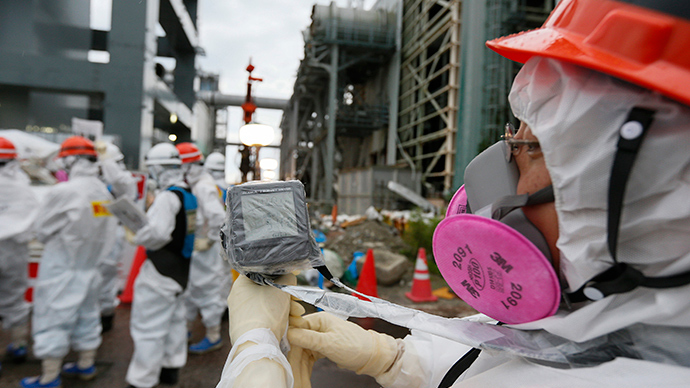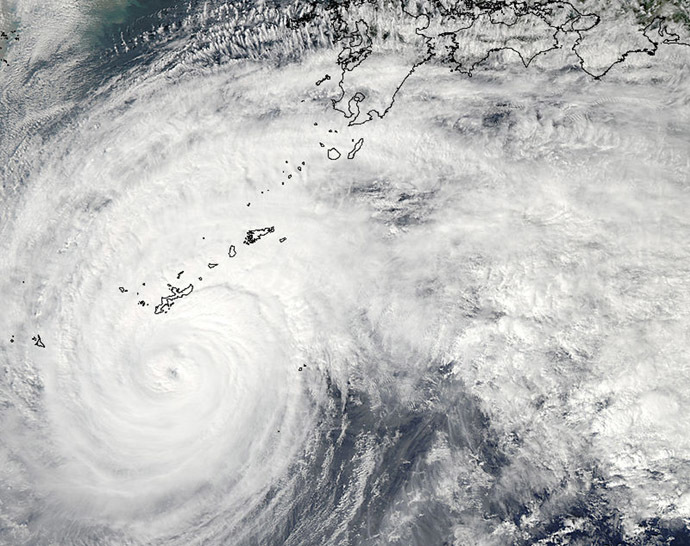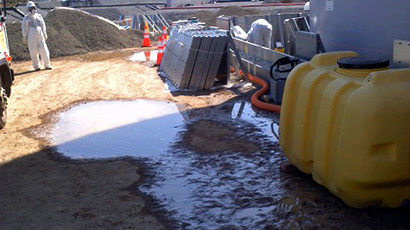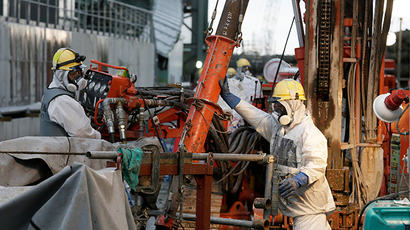Radiation levels at Fukushima rise to record highs after typhoon

The amount of radioactive water near the Fukushima Daiichi nuclear plant has risen to record levels after a typhoon passed through Japan last week, state media outlet NHK reported on Wednesday.
Specifically, levels of the radioactive isotope cesium are now at
251,000 becquerels per liter, three times higher than
previously-recorded levels. Cesium, which is highly soluble and
can spread easily, is known to be capable of causing cancer.
Meanwhile, other measurements also show remarkably high levels of
tritium – another radioactive isotope of hydrogen. Samples from
October 9 indicate that there are 150,000 becquerels of tritium
per liter in the groundwater near Fukushima, according to Japan’s
JIJI agency. Compared to levels recorded last week, that’s an
increase of more than 10 times.
Additionally, “materials that emit beta rays, such as
strontium-90, which causes bone cancer, also shattered records
with a reading of 1.2 million becquerels, the utility said of the
sample,” JIJI reported.

Officials blamed these increases on the recent typhoon, which
resulted in large amounts of rainfall and injured dozens of
people on Okinawa and Kyushu before moving westward towards Tokyo
and Fukushima.
While cesium is considered to be more dangerous than tritium,
both are radioactive substances that authorities would like to
keep from being discharged into the Pacific Ocean in high
quantities.
For now, extra measures to contain the issue are not on the
table, since “additional measures have been ruled out since
the depth and scope of the contaminated water leaks are unknown,
and TEPCO already has in place several measures to control the
problem, such as the pumping of groundwater or walls to retain
underground water,” according to the IANS news service.














